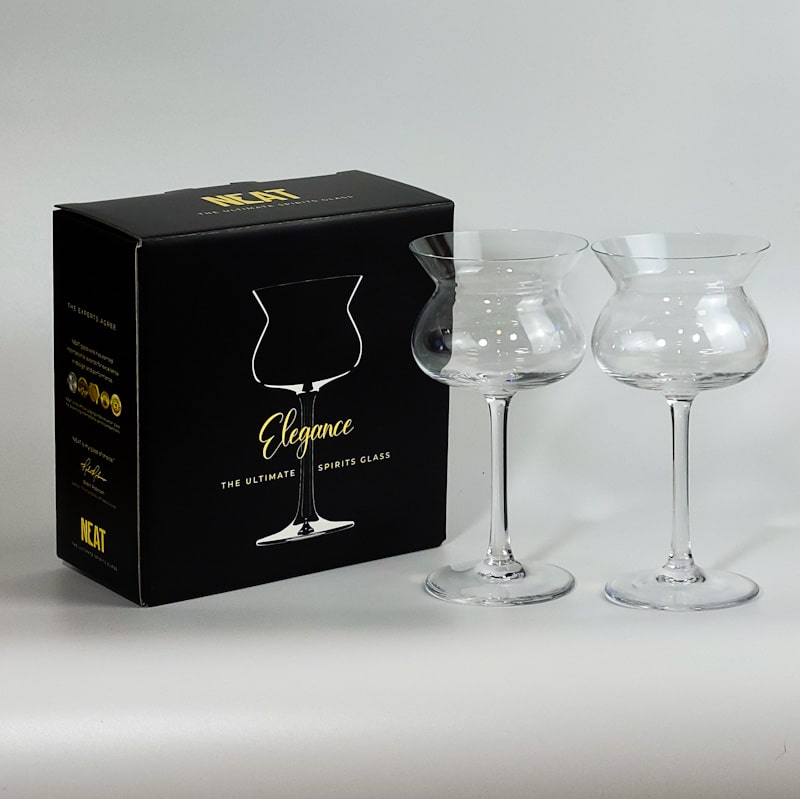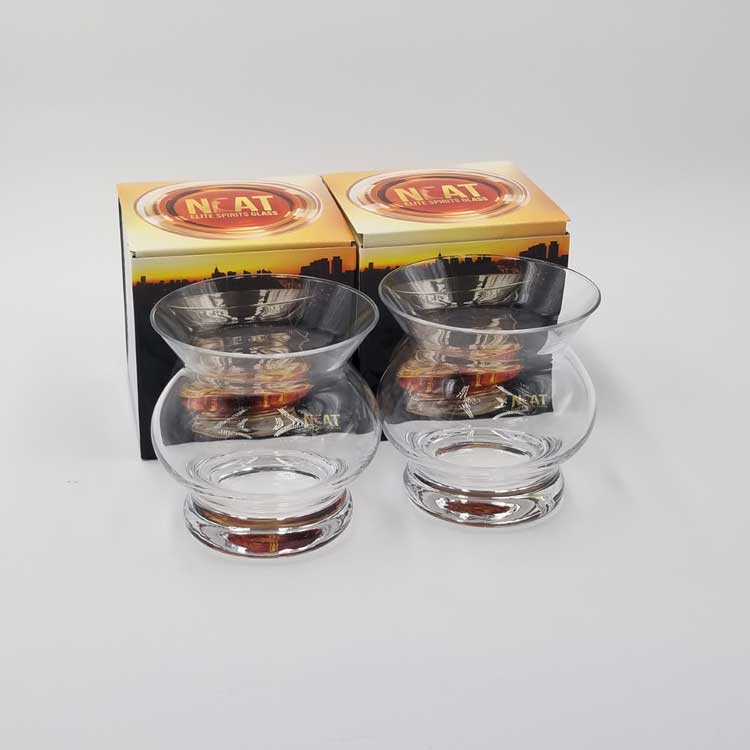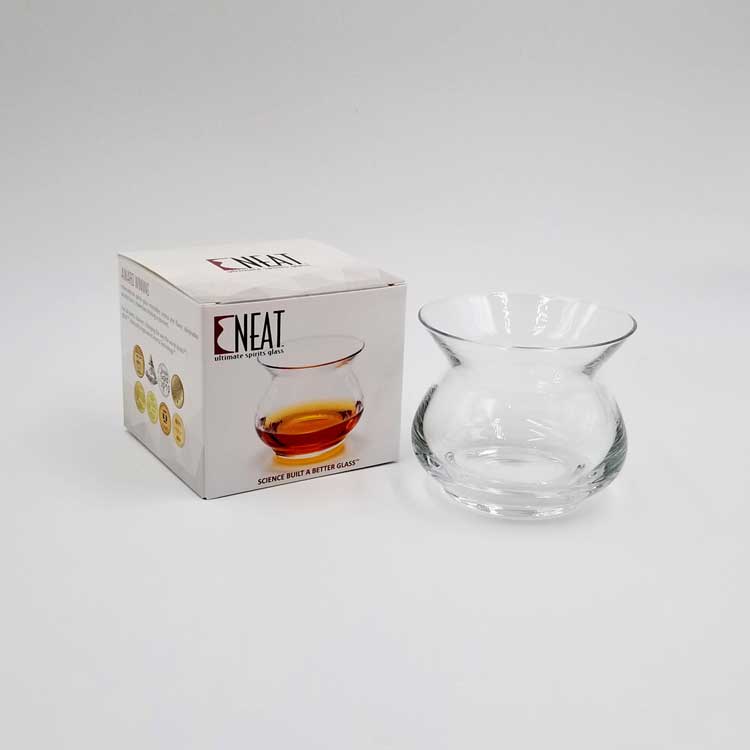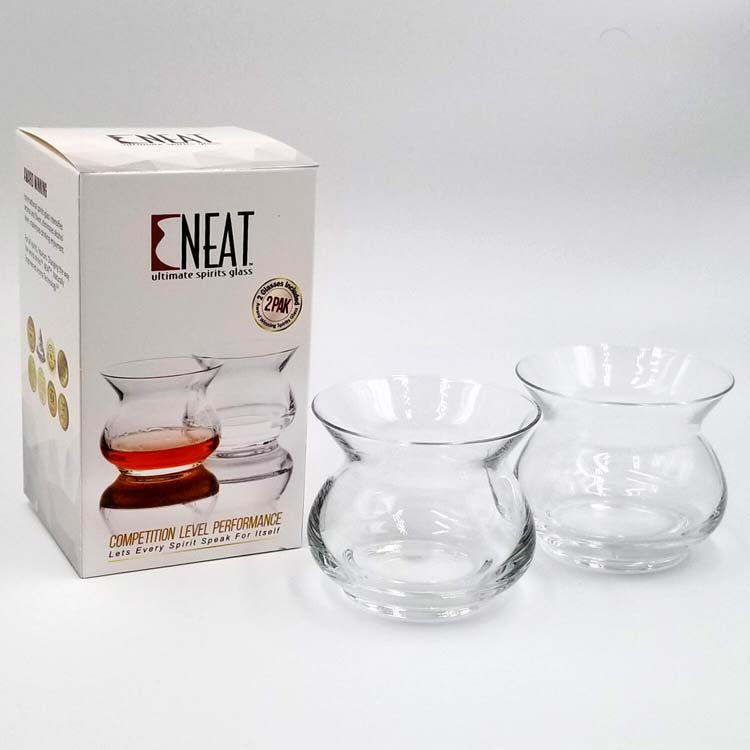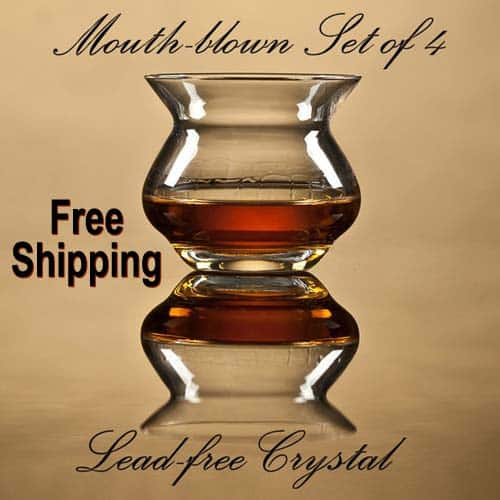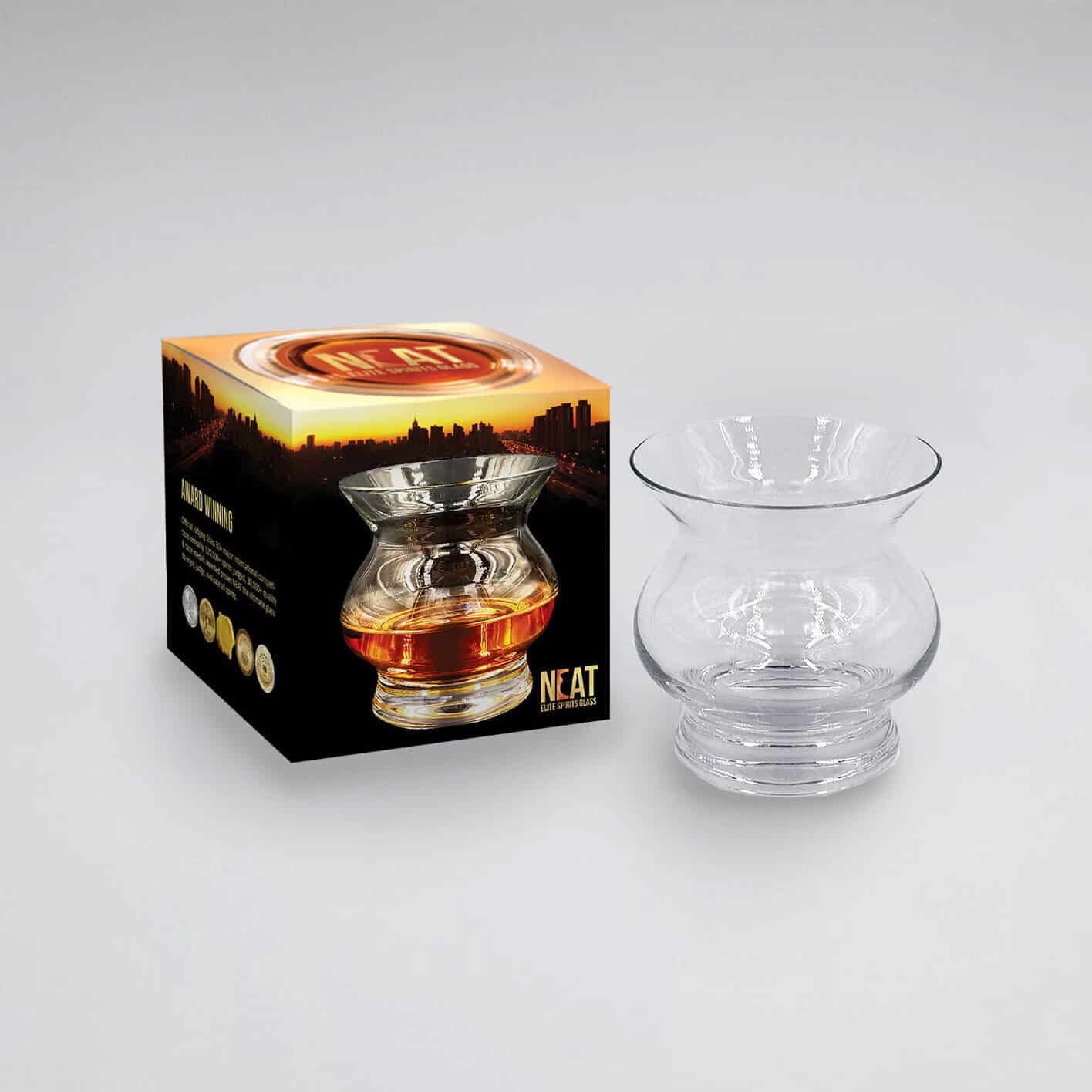
Choosing the Best Glass – History & Myths of Popular Glassware
Choosing the Best Glass: How did the three most common glasses ever become popular? This story is the classic example of what happens when industries that evolve from craft suddenly meet science and are not prepared for a major but necessary change. Within the spirits industry, known olfactory science has never been a major consideration, and changes in preferred glassware and nosing techniques have been driven by internal motives and established tradition. Discussion on the evolution of nosing evaluation is necessary to understand why so many have relied so long on spirit glass shapes that are functionally inadequate to provide honest evaluation.
There exists an attitudinal aspect to enhancing sensual enjoyment. Too often, we have other things to do and forsake the development of the senses to gain a little more time to watch sports, surf the internet, comment on social media, or play video games. We train ourselves to take the path of least resistance which often means less work, and often settle for mass-produced products (coffee pods, frozen dinners, or drive-through burgers) rather than seek self-discovery of the aromas, flavors, herbs, and spices that truly deliver personal olfactory and taste satisfaction and enjoyment.
Much like education, the true development of the senses is dependent on personal effort and not simply the thoughtless acceptance of what someone else relates. Finding the right sources and reading is key to education, and choosing the right glass (diagnostic tool) is important to developing a keener sense of smell and enjoyment of spirits. For decades choosing glassware has fallen into thoughtless acceptance, few ever perform side-by-side comparisons, and many believe that the glass is simply a vessel to transfer a beverage from container to mouth or an iconic fraternal membership badge that identifies them with the spirits they prefer to drink.
Those who do compare, generally miss the point and get caught up in styling and identification (gender, purpose) rather than function. The serious approach to spirits evaluation is about delivering true aroma and flavor from the spirit to the nose and tongue to evaluate. Association of a particular shape to a particular spirit, gender identification (that is a ladies’ glass, I need a man’s glass), or preference based on style or traditional acceptance are all diversions that avoid and obscure true function. When the function is secondary, evaluation and enjoyment both suffer.
Two erroneous assumptions have been around for centuries that govern glassware design, driving glass manufacturers to rely on selling visual style rather than solving the problem of nose-numbing ethanol.
- Erroneous Assumption #1: Small rim areas collect all the aromas at the nose, preventing any from escaping detection. Rebuttal: True, but small rims also concentrate and trap nose-numbing ethanol which dominates olfactory receptors and destroys smell-ability.
- Erroneous Assumption #2: All aroma molecules are hopelessly mixed together in the aroma cloud and can never be separated, so implementing procedural devices is the only way to combat the effects of nose-numbing ethanol. Rebuttal: Aromas dissipate at different speeds controlled by their molecular structure (and weight). Careful vessel design can enhance separation. These procedural devices only work for the glass design for which they were implemented.
The Snifter: The worst performer of the three common spirits glass, the Snifter, often called a balloon, was once the fashionable glass of 20th-century spirits drinkers in Europe and Russia. To our knowledge, no one lays claim to the invention of the snifter, yet there are some instances of use as early as the mid-1800s. We give Ravenscroft credit for the technology (leaded crystal expanded shape possibilities by increasing work time and pliability of glass) that allowed the first manufacture of ridiculously large and thin bowls which characterize the snifter. Cognac and brandy drinkers may be easily recognized by the unusually large bowl, short stem (for holding securely between two middle fingers with the palm cradling the bowl to warm the spirit), and the small opening which traps all the aromas within the bowl. Many are designed to hold an ounce and a half or so when laid on their side on a level surface; a prophetic position relating to the highly concentrated ethanol captured and delivered to the drinker by the snifter.
Designed for best swirling and high evaporation, with a small opening to trap the aromas, these nose bombs were created for getting high quickly on ethanol, and nothing more. As previously discussed, the snifter concentrates ethanol and obscures character aromas with overpowering nose-numbing ethanol. Palm warming will release more aromas to the nose that would not normally be evident at room temperature. Many drinkers ostentatiously and ceremoniously heat the snifter with a small candle to “experience more aromas” but drive volumes of vaporized ethanol to the nose and may fry the lower lip to the snifter rim if too much heat is applied. A few of the devices used to heat a brandy snifter:
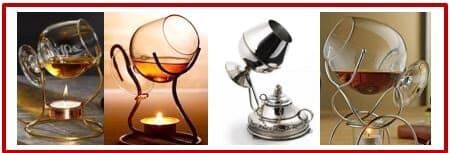
Sniffing concentrated ethanol brings it into the pulmonary alveoli sacs where it is quickly picked up by tiny blood capillaries and carried to the brain for a much quicker high than possible through intestinal tract absorption. The respiratory path is the channel of choice for drug “snorters” and spray paint “huffers”, and it works quickly. Those who are interested in aromas and comparing spirits should stay away from snifters completely. Snifters are the “bong” of spirits, and Cognac, Armagnac, and brandy distillers know better. Snifters deliver a rank disservice to any and every spirit by favoring nose-numbing ethanol and quick intoxication over savoring character aromas and flavors.
The Tumbler: The earliest tumblers had round bottoms to right themselves when knocked over, or to prevent one from setting down the glass if the drink was not finished. The name is traced to the mid-1600s, yet simple versions of what we call a tumbler today, with vertical sides and thick flat bottom were earlier than the 1st century BC. Tumblers became the spirit glass of choice in early America because they were readily available, and became more popular as a preferred whiskey glass when Kentucky distillers commonly recommended them in the mid-1900s because they were large enough to hold a few ice cubes and a splash of “branch” water to alleviate nose-numbing and palate burn

As noted in the previous presentation, tumblers allow ethanol a generous escape path and avoid the ethanol concentration prevalent in tulip and snifter styles. Of the three common glassware styles, tumblers are by far the preferred spirits evaluation and nosing glasses
The Tulip/Chimney: The copita shape is the original design of the widely used tulip glass derivatives and was introduced as a sherry glass by traders importing Spanish sherry to Great Britain. Borrowing the shape and size of the “dock” glass and used to seal transfer and acceptance of quality product at the loading dock, copita was a suitable size for just the right amount of sherry as an after-dinner drink. The popularity of the glass in England and Scotland was enhanced by the popularity of sherry among the landed gentry in England and subsequent popularity among the general populace, eventually becoming a major rebottled and branded export supplying a world demand.
Somewhat connected by the repurposing of a huge inventory of imported, empty sherry barrels to age scotch, the copita seemed a logical choice for a spirits glass. Small, easy to hold, and suitable for the under-exaggerated “wee” dram, of around an ounce and a half (45ml), acceptance by whisky blenders was the key factor to entrenching the copita as the iconic glass of choice for scotch whisky.
The glass evolved into many different styles yet kept many similar key dimensions. Several shapes of the tulip/copita/chimney are shown (note that their rim height, volume capacity, tiny bowl diameters, tall rim heights, and mostly convergent sidewalls are similar and typical of most styles of common spirits glasses)
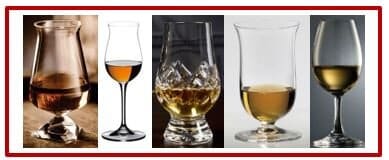
In whisky drinker logic, one should do what the experts do, and in this case, the experts are the blenders, those closest to the aromas and flavors of the whisky, and responsible for the final profile and product.
There is one small hitch to adopting this logic. The blenders have for decades thoroughly understood their choice of glass shape concentrates ethanol and destroys the ability to blend successfully due to ethanol anesthesia, so they dilute to 20% ethanol with water; one ounce of water for every ounce of 40%ABV spirit. All this to fix the glass rather than find another shape, knowing that the original ethanol-concentrating design was the obvious detriment to olfactory sensitivity. In addition, that percent water dilution creates another diagnostic problem which blenders mistakenly still ignore, to be discussed in a later presentation on the effects of water added to spirits.
Who drinks spirits at 50% dilution (40% ABV down to 20% ABV)? Answer: no one but blenders, and then, only while they blend. In other words, the public, in their search for enjoyment and correctness has hit a snag by preferring the whisky industry’s established spirits drinkers’ icon and identification badge, the tulip glass. Unfortunately, adopting the blenders’ (experts) glass but failing to use it in the manner the blenders do thwarts the original intent to make it an acceptable diagnostic tool.
The great Scotch invasion of America in the ‘60s was saved from near collapse when scotch whisky representatives realized the American nose was unacclimated to drinking straight whisky, how it has been consumed for centuries in Europe. Prohibition fostered horrible distillations by anyone who aspired to distill, with no consideration for head or tail cuts, and the resulting product was mixed with fruit juice, herbs, soda, flavoring, and other substances to conceal the wretched aromas and flavor profiles of poorly made garage and basement distillations. As a result, the cocktail was born, and after repeal, the American public continued to prefer mixed drinks to straight consumption while Europeans continued their long, uninterrupted tradition of enjoying straight, un-iced, and unmixed spirits.
To overcome the Americans’ reluctance to drink and appreciate whisky straight and neat (no ice, no mix, no water), scotch whisky purveyors designed a drinking procedure to bring well-to-do Americans into an attractive, distinctly elite “club” of successful businessmen with a rich international membership – privileged scotch drinkers, complete with a recognizable fraternal membership badge, the iconic copita glass, and later the Glencairn. These procedures made the glass more acceptable to many and are based on the assumption that the tulip glass was the only possible glass ignoring any other alternatives. These procedures have become the ritualistic ceremony for drinking scotch whisky, and are easily recognizable traits of accomplished scotch drinkers, yet many are not effective (see italics):
- Breathe through mouth and nose simultaneously to avoid inhaling nose-numbing ethanol. Alleviates initial olfactory pain but delivers smaller air-diluted samples, affecting aroma detection. Ethanol concentration remains high, occupying more olfactory receptors with each consecutive sniff.
- Do not swirl. Swirling is the “engine” that propels evaporation. No swirling yields much less evaporation and fewer aromas to evaluate. Swirling is discussed in a previous presentation.
- Waft. Place the vessel 15–20 cm from the nose, slightly below the nostril level, and wave aromas over the top of the glass toward the nose to avoid pain and numbing. Wafting acclimates the olfactory receptors to prevent the initial pungency of concentrated ethanol, ethanol lockout continues during sniffing, as ethanol concentration does not change.
- “Shake hands”. Position the glass about one foot away from the nose while sniffing, subsequently repositioning successively closer while sniffing, until the rim is directly under the nostrils. Gradual acclimation avoids initial nose burn but does not avoid lockout when sampling from small-rim diameter vessels. Ethanol vapor concentration remains at the same high levels during sampling.
- Add water to open up the aroma. Water raises liquid surface tension shutting down evaporation of all aromas, including those important to identification and evaluation. “Opening up” is the perception of relief occurring due to less pungent ethanol on the olfactory receptors.
Distillers, spirits educators, and spirits ambassadors missed another opportunity, as concentrating on the retro-nasal experience as the primary diagnostic could have possibly avoided useless procedural devices designed to reinforce ritual and validate tradition for a glass that exacerbates nose-numbing and works against truth in evaluation. This showcases the spirits industry’s perceived importance of maintaining the icon at any cost.
If blenders dilute by 50% because they chose to maintain their inefficient diagnostic tool, and the educators continue to teach the procedural devices developed to make the tulip glass acceptable, when and where does science step in and replace nonsense with fact? Nosing and evaluation credibility and lower spirits quality levels acceptable to the general consumer will continue as long as industry brand ambassadors and representatives continue to endorse tulip/copita as the aroma detection tool, punctuated with the powers of suggestion while hiding the true flavor profile. The consumer will remain sufficiently fooled as they were with the tongue map, hopefully, short term.
Tradition rituals and fraternal membership can be embraced, as long as it does not discredit knowledge and science and steer away from truth and true enjoyment.
The Takeaway: Sooner or later tradition gives way to science and function which can benefit a large number of people and improve quality if correctly applied. Stay on the leading edge, read, learn, and educate to get closer to the truth as it continues to evolve through discovery and application.
Choosing the best glass should be based on science and function, not legacy and fraternity. Referring back to our original “Bridge of Asses” as applied to spirits evaluation, perhaps the bridge is personified by glassware choice. We think so and have spent the last 18 years defining, designing, and marketing an alternative solution to the three commonly accepted glassware types for spirits drinkers. The subject of the next presentation is A New Concept – Manipulating Aroma Diffusion for Evaluation and Diagnostics. Shop for the best glass to suit your needs now. See what independent sensory researchers say about NEAT.

